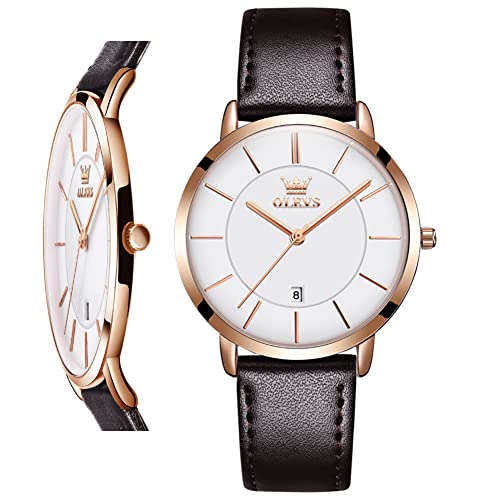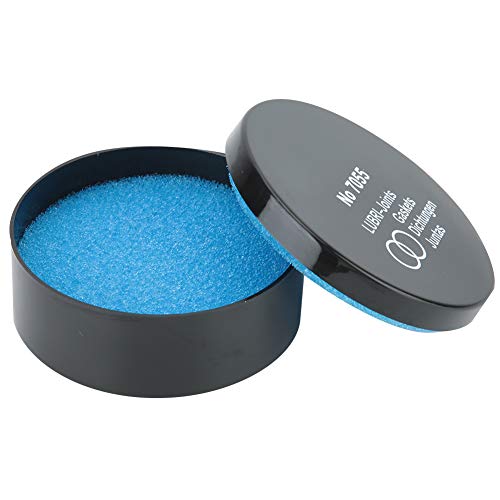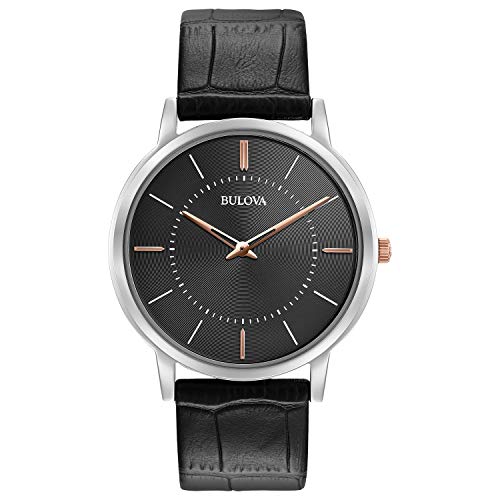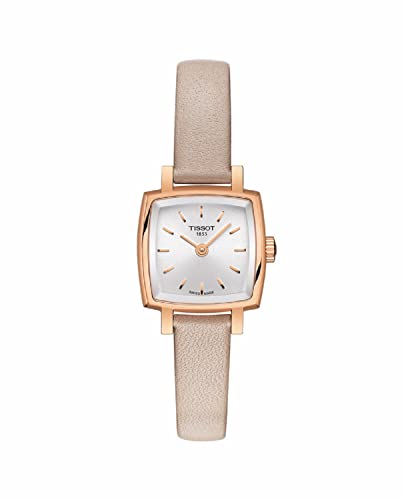Learn how to ensure the water resistance of your ultra-thin dress watch in this step-by-step guide. Protect your watch from water damage and preserve its functionality and longevity.
Sleek Timepieces for the Fashion-forward
Check the water resistance rating
To check the water resistance rating of your ultra-thin dress watch, first consult the manual or visit the manufacturer’s website. Look for information regarding the water resistance level of your watch model. If you cannot find the manual or relevant information online, contact the manufacturer directly for clarification.
Understanding the water resistance rating is crucial to prevent potential damage to your watch. The rating will indicate the maximum depth or pressure your watch can withstand without water penetration. Take note of the specific water resistance level to determine if your watch is suitable for exposure to water, such as during handwashing or light rain, or if it is only designed to withstand splashes and brief immersion. By knowing the limitations of your watch’s water resistance, you can ensure its longevity and avoid unnecessary repairs or replacements.
Avoid water exposure during normal use
Avoid Water Exposure During Normal Use
Introduction:While your ultra-thin dress watch may have some degree of water resistance, it’s important to exercise caution and minimize water exposure during regular wear. By following simple precautions, such as removing your watch before engaging in activities like swimming, showering, or washing dishes, you can greatly reduce the risk of water damage and ensure the longevity of your timepiece.
Guidelines for Avoiding Water Exposure:
- Take off your watch before swimming: Even if your watch claims to be water-resistant, it is best to err on the side of caution and remove it before entering the water. Chlorinated or saltwater can be particularly damaging to the delicate internal components of your watch. Additionally, rapid temperature changes while swimming or diving can compromise the seals and lead to leakage.
- Remove your watch before showering: While wearing your watch during a quick hand wash may seem harmless, exposing it to soapy water, steam, or high-pressure water can seep into the case and potentially damage the mechanism. To avoid any risks, take off your watch before stepping into the shower and securely store it in a safe place.
- Avoid wearing your watch while washing dishes: The detergent used while washing dishes can contain harsh chemicals that may harm the water resistance properties of your watch. The combination of hot water and soap can compromise the seals, render the watch vulnerable to moisture, and increase the likelihood of water damage. Protect your timepiece by taking it off before tackling those dirty dishes.
Remember, even with water-resistant capabilities, watches can still succumb to water damage if not properly cared for. It is best to adopt these simple practices to ensure that your delicate dress watch remains in pristine condition for years to come.
Regularly check the gaskets
Regularly check the gaskets to ensure the water resistance of your watch. Gaskets play a crucial role in preventing water from entering the watch’s case and damaging the internal components. Without properly functioning gaskets, your watch becomes vulnerable to water damage and may even stop working altogether. So, follow these simple steps to inspect your gaskets and maintain the water resistance of your watch.
1. Examine the gaskets visually: Carefully inspect the gaskets by opening the watch’s case back. Look for any visible signs of wear, such as cracks, tears, or deformations. Pay attention to the condition of the gaskets around the crown, pushers, and any additional openings on the watch.
2. Perform a water resistance test: If your watch is designed to be water-resistant, perform a water resistance test. Fill a small container with water, ensuring it is deep enough to submerge the watch. Carefully place the watch in the water, making sure no water enters the movement. Leave it submerged for a few minutes and then carefully remove it. Dry the watch thoroughly, and check for any signs of water ingress or moisture inside the case.
3. Schedule professional maintenance: Even if you don’t notice any visible issues, it is recommended to have the gaskets checked and replaced regularly by a professional watch technician. They have the expertise and specialized tools needed to ensure the gaskets are in optimal condition, maintaining the water resistance of your watch.
By regularly inspecting the gaskets and promptly replacing them if necessary, you can ensure the continued water resistance of your watch, protecting it from potential damage.
Ensure proper crown and case seal
- Check the crown: Before exposing your dress watch to water, always make sure the crown is tightly screwed in or pushed in completely. The crown is the small knob usually located on the side of the watch. If it is a screw-down crown, turn it clockwise until it is firmly in place. If it is a push-in crown, press it down firmly until you feel it click into position. This will create a proper seal and prevent any water from seeping into the watch.
- Secure the case back: Along with the crown, it is essential to ensure that the case back of your ultra-thin dress watch is securely closed. The case back is the rear cover of the watch that protects the internal components. Gently press the case back into place, making sure it aligns perfectly with the edges of the watch case. If your watch has a screw-down case back, use a case back wrench or the appropriate tool to tighten it clockwise. This will provide an extra layer of protection against the entry of water.
Remember, maintaining a proper seal on the crown and case back is crucial for preserving the water resistance of your ultra-thin dress watch. By following these simple steps, you can prevent water damage to your timepiece and ensure its longevity.
Have the watch pressure tested
- Take your ultra-thin dress watch to a professional watchmaker or authorized service center.
- Request a pressure test to be conducted on your watch to ensure its water resistance.
- Allow the watchmaker to subject your watch to simulated underwater conditions.
- Wait for the test to be completed, as the watchmaker verifies the water resistance of your timepiece.
- Consult with the watchmaker regarding any potential leaks or issues that may need to be addressed.
- Follow the watchmaker’s recommendations for addressing any identified problems with your watch.
- Ensure that any necessary repairs or adjustments are carried out by the watchmaker or authorized service center.
Final thoughts and recommendations
In conclusion, maintaining the water resistance of an ultra-thin dress watch requires attention to detail and proactive measures. By understanding the water resistance rating, minimizing water exposure, inspecting gaskets, ensuring proper seals, and considering professional pressure testing, you can safeguard your watch and prolong its water resistance capabilities.
Tools and Materials
Waterproofing Methods
Features and Maintenance of Jaeger-LeCoultre Master Ultra Thin Réserve De Marche Q1378420
Step-by-Step Guide on Using Ultra-Thin Dress Watches
- Familiarize yourself with the features: Take some time to understand the functions and features of the ultra-thin dress watch you have, such as the crown, dial, hands, and any additional complications like date or moon phase indicators
- Handle with care: Due to their delicate nature, handle these watches with caution. Avoid exposing them to extreme temperatures, water, or rough activities. Always remove the watch before engaging in any physical work or sports
- Adjust the strap or bracelet: If the watch comes with an adjustable strap or bracelet, ensure it fits comfortably on your wrist. Adjust it to the desired size using the provided clasps or links. It’s important to find the right fit to ensure the watch sits securely and comfortably
- Wind or wear regularly: Most ultra-thin dress watches are mechanical, which means they require regular winding or wearing to keep the movement functioning accurately. If it’s a manual-winding watch, remember to wind it at least once a day. If it’s an automatic watch, wearing it daily will keep it functioning, but consider getting a watch winder if you don’t wear it regularly
- Store properly: When not wearing your ultra-thin dress watch, store it in a safe and clean place. Consider using a watch box or a soft cloth pouch to protect it from dust, scratches, and potential damage
- Remember, each watch may have specific instructions or care recommendations, so it’s advisable to refer to the user manual provided by the manufacturer for detailed guidance
Frequently Asked Questions about Ultra-Thin Dress Watches
What are some popular materials used in the construction of ultra-thin dress watches?
Some popular materials used in the construction of ultra-thin dress watches include stainless steel, titanium, gold (rose, yellow, or white), and ceramic. These materials are known for their durability, lightweight properties, and aesthetic appeal. Stainless steel and titanium are often used to create the case and bracelet, as they offer strength and resistance to corrosion. Gold, on the other hand, provides a luxurious touch and comes in different shades to match different styles. Ceramic is also becoming increasingly popular due to its scratch-resistant properties and modern look.
Are there any disadvantages to wearing an ultra-thin dress watch?
Yes, there are a few potential disadvantages to wearing an ultra-thin dress watch.
Firstly, the ultra-thin design often means that the watch has a smaller and more delicate movement, which may be more susceptible to damage or require careful handling. The slim profile of the watch also limits the space available for additional features such as complications, date displays, or extra dials, which can be a drawback for those who prefer more functionality in their timepiece.
Secondly, the ultra-thin design may sacrifice durability and water resistance compared to thicker watches. Thin cases and delicate materials may be more prone to scratches, dents, or even breakage, especially during physical activities or if accidentally dropped.
Lastly, the ultra-thin watch may have a shorter power reserve due to limited space for larger or multiple barrels. This means that the watch may require more frequent winding or have a shorter autonomy compared to thicker watches with larger power reserves.
Ultimately, whether these disadvantages are significant or acceptable depends on personal preferences and the intended use of the watch.




















